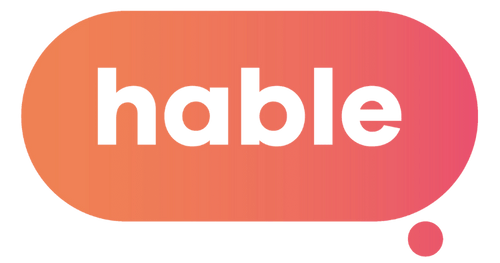The year 2024 has seen a big jump in technology, especially in devices that help visually impaired people. As technology grows, artificial intelligence (AI) is playing a bigger role, making these gadgets even better and easier to use. You can see AI everywhere, from smart chatbots improving customer service to advanced AI systems like the Rabit R1 and AI news anchors. These advancements are amazing but also remind us to watch and manage AI carefully to keep humans involved.
One impressive use of AI is in assistive technology. AI-powered devices can now do complex tasks, giving visually impaired users more independence. For example, AI apps can describe surroundings, read text aloud, and help with daily activities using voice commands. But as AI gets better, we must also remember its limits and the need for perfect programming to avoid service issues.
In this blog, we’ll look at seven new gadgets from 2024 that are changing the lives of visually impaired people. These innovations show how far technology has come, blending AI advancements with a focus on environmental sustainability. Join us as we explore these exciting devices and their potential to shape the future of assistive technology.
List of top ‘7’ gadgets introduced in 2024
1. Dot Lumen Glasses
Navigating a city for blind people can require the help of a guide dog, a loyal companion trained to lead safely through bustling streets. However, training guide dogs is both time-consuming and expensive. Enter this great solution: smart glasses designed by DotLumen.
These advanced glasses offer blind individuals the independence and confidence to move around the city with ease, much like a guide dog. The smart glasses rapidly process new information, providing real-time guidance and adapting to changing environments faster than any trained animal could. This technological marvel ensures safety and efficiency, empowering users to explore their surroundings with minimal assistance.

The cost and effort involved in training guide dogs can be prohibitive, with extensive training periods and significant financial investment required. In contrast, these smart glasses present a more accessible option, reducing the barriers to independent mobility for blind individuals.
Of course, the product is still in development and the relevance and accuracy have yet to be determined. But the many testimonials and videos presented by the company show good promise of this innovation.
Experience the future of mobility aids with DotLumen's smart glasses, an innovation that combines advanced technology with practical functionality. Discover more about this device at DotLumen.
2. Glide
Navigating a city or building as a blind person can be challenging. Here is Glide, a solution that brings ease and familiarity. Glide is a handheld device designed to help blind individuals move around safely and confidently. Unlike Lumen glasses, which are worn on the head, Glide is held in your hand, much like a guide dog.

For those who prefer not to wear devices on their heads or are simply more comfortable with the feeling of holding a guide, Glide is the perfect companion. It provides the same advanced navigation and obstacle detection as cutting-edge wearables but offers the comfort and familiarity of a handheld guide. Whether you're exploring new city streets or navigating through a building, Glide gives you the freedom to move independently, with a sense of control in the palm of your hand.
Additionally interesting is that Glide does not just use sound but also relies on haptic feedback for the user.

Glide is has started to take pre-order and is expected to deliver the products around september 2025. We have seen glide at many of the major assistive technology conferences where we recommend you give this products a try!
3. BeMyEyes AI
Going strong for a while now, Be My Eyes, an app designed to connect visually impaired users with sighted volunteers for real-time assistance. By this points most of us are aware of their amazing innovations this year, but we had to mention them in thism list. This platform has taken a significant step forward with its new feature, "Be My AI," which offers automated image descriptions.
To use the Be My AI feature, simply enable VoiceOver on your device. When you encounter a public picture, triple-tap on it and select Describe with Be My Eyes to activate this function. This will automatically open the Be My Eyes app, where the AI will provide a detailed description of the image. This seamless integration makes it as easy as pi for us to get instant, accurate descriptions without waiting for a volunteer.

The AI technology behind Be My AI uses advanced algorithms to analyze and interpret images, delivering clear and helpful descriptions. Whether it's understanding the content of a photo or identifying details in a scene, Be My AI is a game-changer for accessibility and independence.
For more information on how Be My AI is revolutionizing the experience for visually impaired users, visit the official announcement here. Embrace the future of assistive technology with Be My Eyes and experience a new level of autonomy in navigating the visual world.
4. Niira Smartglasses
Imagine a world where you are always informed about your surroundings. With Niira Smart Glasses, this is now a reality. These glasses provide real-time descriptions of what’s around you, from identifying people and their appearances to helping you control touchscreen devices effortlessly.
Equipped with advanced 3D perception, Niira Smart Glasses understand spatial environments like never before. The bone conduction audio ensures you receive information clearly without obstructing your hearing, while natural-sounding languages make interactions seamless and intuitive.

One of the standout features is the long-lasting battery, ensuring you stay connected and informed throughout your day. Whether you’re navigating a busy city or using your smart devices, Niira Smart Glasses can enhance your experience.
One of the major questions with these glasses is how it’s truly different from the other solutions that have been presented in the last years.
Learn more about this solution by visiting Niira Smart Glasses.
5. Hable Easy: Are you new to smartphones and feeling overwhelmed?
The Hable Easy is here to make your transition smooth and effortless. This device is designed for those who want to use a smartphone for the first time, and in a completely simplified way.
The Hable Easy acts as an external controller for your smartphone. It connects via Bluetooth, transforming your experience with simple and intuitive controls. This makes it incredibly useful for anyone who struggles with touchscreens or screen reader gestures.

With the Hable Easy, accessing your phone’s features becomes straightforward and stress-free. Its user-friendly design is perfect for beginners, allowing you to navigate and control your phone with ease. The product is not meant for more technical people, but focusses on elderly or people with a motor impairment.
Ready to learn more? Check out our comprehensive guide on the Hable Easy and how it can transform your smartphone experience: What is Hable Easy? Everything You Need to Know.
6. OneCourt’s haptic mini-field
Experience Sports Like Never Before with OneCourt’s Haptic Feedback Mini-Field
As visually impaired sports enthusiasts, we rely heavily on radio announcers to bring the game to life. No matter how skilled the announcer is, there's always a gap between what we hear and what sighted fans see. This is where OneCourt’s Haptic Feedback Mini-Field comes in.

Imagine feeling the action in real-time through vibrations on a miniature field the size of a laptop. With this innovative technology, we can place our hands on the field and sense where the players are and what they're doing. Each vibration corresponds to player movements, giving us a tactile representation of the game.
The OneCourt’s haptic mini-field bridges the gap, allowing blind people to experience sports in a more immersive and interactive way. No longer do we have to imagine the play; we can feel it unfold beneath our fingers. This products brings visually impaired people closer to the excitement and dynamics of the game, enhancing the connection and enjoyment.

Discover more about this incredible innovation and how it can transform your sports experience by visiting OneCourt’s haptic mini-field. Let's feel the game like never before!
7. WeWalk smartcane 2
This is the WeWALK Smart Cane 2: the ultimate companion for the visually impaired. This isn't just any cane—it's packed with innovative technology that offers much more than traditional support. The Smart Cane 2 is equipped with turn-by-turn navigation. But that's not all. With the integration of a Chat GPT voice assistant, accessing information can be done directly with the cane.
Imagine walking to your favorite restaurant and wanting to know the menu prices without pulling out your smartphone. Simply ask your cane! It's that simple. The Smart Cane 2 responds instantly, providing the answers you need in real-time.

Designed to be the same size as a regular cane, the WeWALK Smart Cane 2 blends advanced technology with practicality. This device aims to enhance independence and confidence for its users, making daily navigation and information access a breeze.
The smartcane is the second version of the product developed by th WeWalk Company. The products is not officially released yet but expected to arrive soon. We had the chance the try the SmartCane at the Sight City conference in frankfurt and were impressed by the easy of use and smart features like the flash light.
Discover more about how the WeWALK Smart Cane 2 can transform your mobility experience. Visit WeWALK for further details and join the movement towards smarter, more accessible living.
In 2024, assistive technology for visually impaired individuals has taken incredible strides, offering more independence and accessibility than ever before. From smart glasses to handheld guides and haptic feedback devices, these innovations are reshaping how blind people interact with the world. As AI continues to evolve, the future looks even brighter for assistive tech. For more exciting advancements and devices, be sure to visit Hable's website and explore their range of solutions designed to empower and transform lives.


2 comments
Elimar
Buenas tardes.Mi padre quedo ciego hace unos años actualmente tienes 64 y es ING. Industrial. Técnico superior y graduado con honores. Hoy día está en casa sin saber que hacer con ganas trabajar. Ayudeme con un tipo de trabajo para que mi papá se sienta útil. Gracias antemano. Desde Venezuela.
Siobhan
The blog post contains a link to a legal firm, pretty sure that was not what the poster intended.